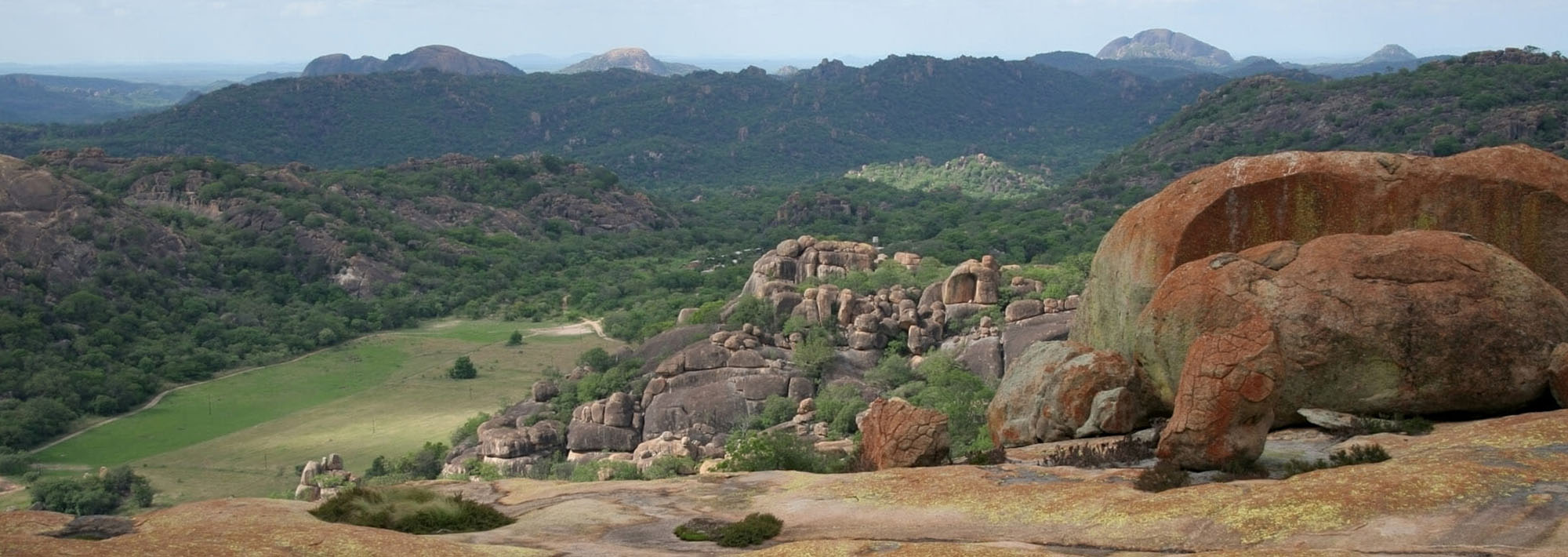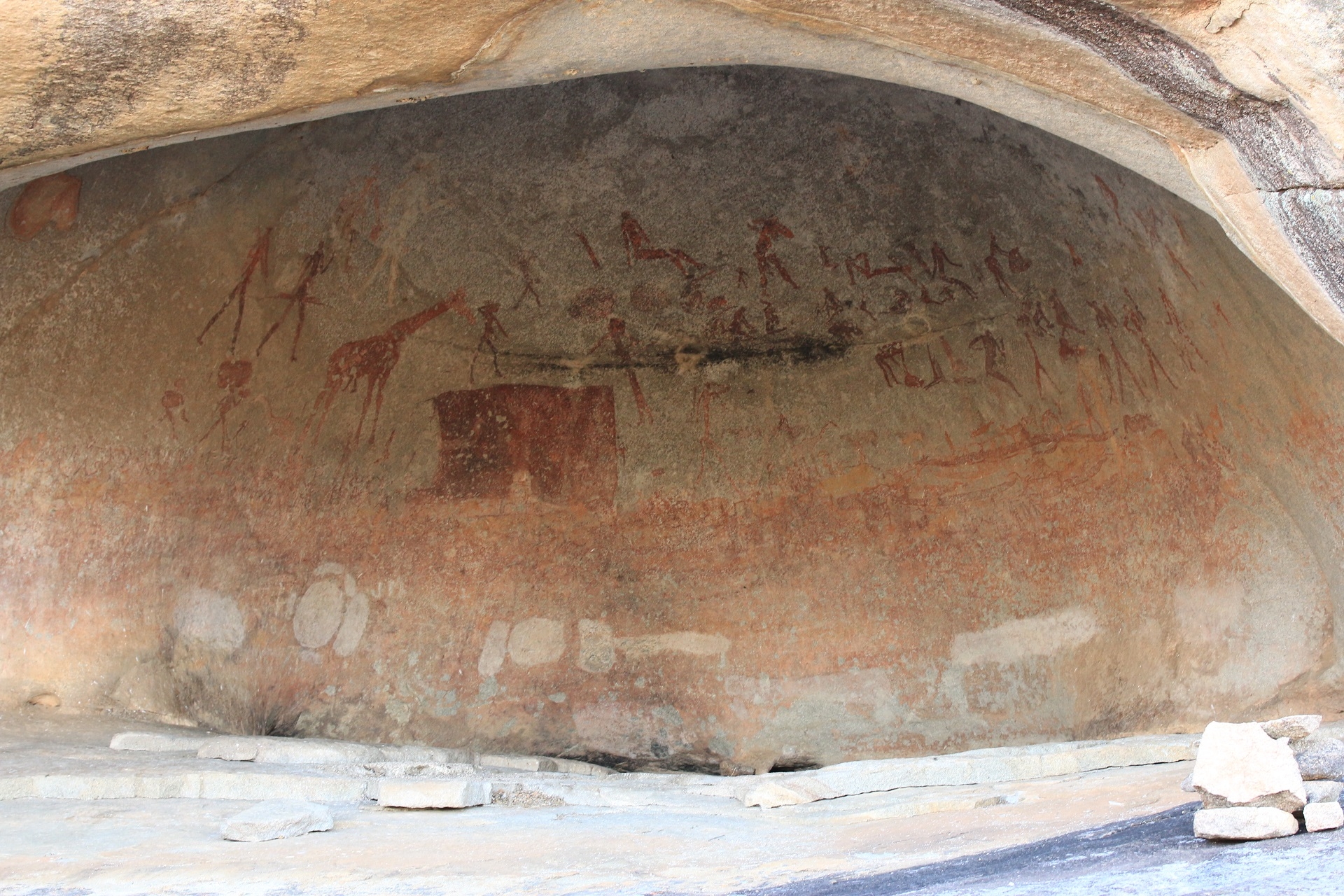Matobo, also known as Matopos, is a region in southern Zimbabwe, renowned for its granite kopjes, unique rock formations, and rich cultural heritage.
This area includes Matobo Hills, a World Heritage Site, and Matobo National Park, Zimbabwe’s oldest national park, established in 1926.
Matobo is characterized by its diverse flora, fauna, and ancient rock art, making it a significant destination for nature enthusiasts and cultural explorers alike.
ALSO READ: Top 10 Japanese Cars for Under $4000 in Zimbabwe (Manufactured After 2013)

Matobo Zimbabwe: Picture credit to Flickr
Origins of the Name
The name “Matobo” finds its roots in the Lozwi tradition, attributed to the ancestors of Kalanga. Another account suggests that King Mzilikazi Khumalo, upon hearing locals refer to the granite domes as “madombo,” whimsically declared, “We will call them matobo,” a play on ‘Bald heads’ in IsiNdebele.
The origin of the name “Matobo” can be traced back to the Ndebele language and its characteristic granite domes found in the region. Here are two main interpretations:
1. “Bald Heads”:
- The most widely accepted explanation is that “Matobo” translates to “bald heads” in IsiNdebele. This refers to the appearance of the smooth, rounded granite koppies and inselbergs that dominate the landscape.
- A popular legend attributes this name to King Mzilikazi Khumalo, the founder of the Ndebele nation. Upon seeing the prominent granite domes, he is said to have remarked, “We will call them Matobo” instead of the local term “madombo” (simply meaning “rocks”).
2. Spiritual Significance:
- Some interpretations connect the name “Matobo” to the spiritual significance of the hills for the Ndebele people.
- In this context, “Matobo” could be related to terms like “Malindidzimu” (meaning “hill of spirits”) or the concept of “the seat of God”. These titles highlight the reverence and cultural importance associated with the area.
Additional information:
- The name “Matobo” is most commonly associated with Matobo National Park in Zimbabwe, a UNESCO World Heritage Site known for its unique rock formations and cultural heritage.
- However, “Matobo” can also refer to a surname or even a brand of Zimbabwean cheese, named after the hills.
ALSO READ: https://zimprofiles.com/top-10-japanese-cars-for-under-4000-in-zimbabwe-manufactured-after-2013/
History

Matobo Zimbabwe: Picture credit to Temoins
Matobo National Park, initially named Rhodes Matopos National Park, originated as a bequest from Cecil Rhodes in 1926.
The park’s boundaries have evolved over time, involving compromises between colonial authorities and local communities.
The Matobo Hills were officially recognized as a UNESCO World Heritage Site in 2003, acknowledged for their distinctive rock landforms dating back over 2 billion years.
The history of Matobo stretches back a remarkable 500,000 years, weaving together human evolution, artistic expression, spiritual beliefs, and political power struggles. Here’s a glimpse into its intricate timeline:
Early Inhabitants (Before 1800s):
- 500,000 – 100,000 years ago: Evidence suggests early human presence in the Matobo Hills.
- 100,000 years ago – 1800s: The San people, skilled hunter-gatherers, leave their mark by creating the impressive rock art depicting their lives and spiritual beliefs found throughout the area.
- 13th – 19th centuries: The arrival of Iron Age Bantu-speaking groups, ancestors of the present-day Kalanga and Ndebele people, introduces new cultural elements and social structures.
Ndebele Arrival and Colonial Encounters (1800s – 1900s):
- Early 19th century: Mzilikazi Khumalo, founder of the Ndebele nation, settles in the region, naming the hills Matobo. The area becomes a spiritual and political center for the Ndebele.
- Late 19th century: British colonial expansion encroaches on Ndebele lands, culminating in conflicts and ultimately, the incorporation of Matobo into Southern Rhodesia.
- 1926: Matobo National Park is established, recognizing its cultural and natural significance.
Modern-Day and World Heritage Recognition (20th century – Present):
- Post-independence (1980): Matobo remains a vital cultural and religious site for the Ndebele people and attracts increasing tourism interest.
- 2003: Matobo Hills Cultural Landscape is inscribed as a UNESCO World Heritage Site, highlighting its outstanding universal value.
- Present: Ongoing efforts focus on conservation, community involvement, and sustainable tourism development for the future of Matobo.
Key Points to Remember:
- Matobo’s history is a tapestry of diverse groups who left their mark on the landscape and spiritual significance of the area.
- The Ndebele arrival and colonial encounters significantly shaped the area’s social and political landscape.
- Today, Matobo stands as a UNESCO World Heritage Site, recognized for its cultural, spiritual, and natural heritage.
Culture
Matobo Zimbabwe: Picture credit to Flickr
Matobo boasts a rich cultural tapestry, with evidence of San (Bushman) habitation dating back 2,000 years.
Over 3,000 registered rock art sites reveal intricate paintings, and archaeological finds span from the Pre-Middle Stone Age to historic artefacts from the 1896 rebellion era.
The hills hold spiritual significance for the Shona and Ndebele people, serving as the former headquarters for the Mlimo, a spiritualist oracle.
The culture around Matobo Hills is rich and multifaceted, shaped by the diverse groups who have inhabited the area over centuries. Here’s a breakdown of some key aspects:
Spiritual Significance:
- Mwari Religion: For the Ndebele people, the Matobo Hills are central to their Mwari religion. Specific hills, caves, and pools are considered sacred sites used for rituals like rainmaking ceremonies and communication with ancestors.
- Rock Art: The abundant rock art depicts spiritual beliefs and practices, offering a glimpse into the San people’s and earlier inhabitants’ relationship with the natural world and deities.
- Ancestor Veneration: Respect for ancestors plays a crucial role in Ndebele culture. Matobo holds significant burial grounds and shrines associated with prominent figures, further connecting the living to the past.
Traditional Practices:
- Craftsmanship: The Ndebele are renowned for their beadwork, pottery, and basket weaving, often incorporating spiritual symbols and patterns. These skills are passed down through generations and displayed at cultural events.
- Music and Dance: Traditional music and dance are vibrant expressions of cultural identity. Rhythmic drumming, chanting, and energetic dances connect communities and celebrate rituals or special occasions.
- Storytelling: Oral storytelling traditions keep history and cultural values alive. Legends, myths, and folktales passed down through generations explain the origins of the hills, spirits, and customs.
Modern Influences:
- Christianity: While traditional beliefs remain strong, Christianity has also influenced some cultural practices and rituals.
- Tourism: Growing tourism brings challenges and opportunities. Local communities participate in cultural performances and festivals, showcasing their heritage while ensuring its sustainability.
- Education: Increased access to education fosters cultural awareness and appreciation among younger generations.
Important Notes:
- It’s crucial to respect the cultural significance of Matobo and follow proper etiquette when visiting sacred sites.
- Engaging with local communities and supporting their initiatives helps preserve and celebrate the vibrant culture around Matobo.
Matobo Hills
The Matobo Hills cover approximately 3100 km², featuring granite formations weathered into awe-inspiring shapes like the ‘Mother and Child Kopje.’ The area’s high botanic diversity comprises over 200 tree species and a variety of fauna, including white rhinos, leopards, and a dense population of black eagles.
Matobo National Park
The national park, incorporating Lake Matopos Recreational Park, houses a game park stocked with diverse wildlife.
Various camps, including Maleme Camp and Mwesilume Camp, provide accommodation for visitors.
Matobo National Park: A Gem of Zimbabwe
Matobo National Park, nestled in the heart of southwestern Zimbabwe, is a captivating tapestry of ancient granite formations, diverse wildlife, and rich cultural heritage.
Established in 1926, it boasts the title of the oldest national park in the country, attracting visitors with its unique beauty and unforgettable experiences.
Breathtaking Landscapes: A Sculpted Wonderland
The park’s defining characteristic is the Matobo Hills, a series of granite kopjes and wooded valleys sculpted by billions of years of erosion.
These majestic formations rise dramatically from the landscape, creating an otherworldly atmosphere.
Among the most fascinating natural wonders are the balancing rocks, precariously perched boulders defying gravity and showcasing the power of nature.
These iconic landmarks, like “The Whale” and “Shakey Rock,” offer stunning panoramic views and leave visitors awestruck.
Venturing deeper into the park, you’ll encounter hidden gems like the Maleme Dam, a scenic reservoir providing opportunities for swimming, boating, and fishing.
Hike up to World’s View, perched atop Cecil Rhodes’s grave, for breathtaking vistas encompassing the entire Matobo region.
Unveiling the Past: A Window into History
Matobo National Park holds immense cultural significance for the Ndebele people, who believe it to be the spiritual home of their ancestors. Throughout the park, you’ll find:
- Burial grounds of revered Ndebele leaders and figures, offering a glimpse into their history and traditions.
- Shrines dedicated to spiritual entities and ancestors, showcase the Ndebele people’s deep connection to their spiritual beliefs.
- Caves adorned with ancient rock paintings created by the San people, depicting their way of life and offering a window into their long-lost culture.
In recognition of its outstanding universal value, UNESCO inscribed Matobo Hills as a World Heritage Site in 2003, highlighting its:
- Breathtaking natural beauty and unique geological formations.
- Rich archaeological and cultural heritage sites.
- Spiritual significance for the Ndebele people.
Encountering Wildlife: A Diverse Tapestry of Life
Matobo National Park is not just about stunning landscapes and rich history; it’s also teeming with diverse wildlife. Embark on a game drive and keep your eyes peeled for:
- Black rhinoceros are critically endangered yet find sanctuary in the park, offering rare glimpses of these majestic creatures.
- Cheetahs, are the fastest land animals, showcasing their incredible speed and agility in their natural habitat.
- Aardvarks, are unique mammals with long snouts and powerful claws, adapted to burrowing and feeding on ants and termites.
Birdwatchers will be in paradise with over 300 recorded bird species, including the majestic black eagle, the national bird of Zimbabwe, and the impressive bateleur with its distinctive wing-dipping display.
Activities for Every Explorer
Matobo National Park caters to diverse interests, offering a range of activities for visitors:
- Hiking trails wind through scenic landscapes, allowing exploration of the granite kopjes, balancing rocks, and caves.
- Camping sites provide opportunities to immerse oneself in the park’s ambience under the starry sky.
- Rock climbing challenges adventurers to scale the granite formations, testing their skills and courage.
- Game-viewing safaris enable encounters with the park’s diverse wildlife, providing unforgettable memories.
- Lodges and campsites cater to various accommodation needs, ensuring a comfortable stay amidst the wilderness.
Whether you seek adventure, cultural immersion, or relaxation, Matobo National Park has something for everyone.
Places To Visit
Tourists can explore archaeological sites like Bambata Cave, Inanke Cave, Nswatugi Cave, Pomongwe Cave, and the White Rhino Shelter.
Notable historical landmarks include Cecil Rhodes’ tomb on Malindidzimu and the Shangani Patrol memorial at World’s View.
Top Places to Visit in Matobo National Park, Zimbabwe:
Matobo National Park offers a diverse range of experiences for visitors, from breathtaking scenery and unique rock formations to rich cultural heritage and exciting wildlife encounters. Here are some of the must-visit places within the park:
1. The Balancing Rocks:
These precariously perched granite boulders are a marvel of nature and a defining feature of Matobo. Hike up to the top of some of the most famous formations like “The Whale” and “Shakey Rock” for stunning panoramic views of the surrounding landscape.
2. The Maleme Dam:
This scenic reservoir is a popular spot for swimming, boating, and fishing. Take a boat trip on the dam to appreciate the surrounding hills and spot wildlife like hippos and crocodiles.
3. The World’s View:
Located atop the summit of Cecil Rhodes’s grave, this viewpoint offers breathtaking vistas of the entire Matobo region. Hike or drive up to the top for a truly unforgettable experience.
4. The Nswatugi Cave:
This ancient cave is adorned with well-preserved San rock paintings depicting hunting scenes, animals, and spiritual symbols. Explore the cave with a guide to learn about its significance and the stories etched on its walls.
5. The Cecil Rhodes Grave:
This imposing granite structure is the final resting place of the founder of Rhodesia. Hike up to the top for panoramic views and to learn about the controversial figure’s legacy.
6. The Silunguzi Village:
Immerse yourself in Ndebele culture by visiting this traditional village. Learn about their way of life, witness traditional crafts demonstrations, and even participate in a traditional dance performance.
7. The Black Rhino Sanctuary:
Matobo National Park is home to one of the most significant populations of black rhinos in Zimbabwe. Participate in a guided game drive or rhino tracking expedition to see these critically endangered animals in their natural habitat.
This monument marks the grave of King Mzilikazi, the founder of the Ndebele nation. Pay your respects to this important historical figure and learn about his role in shaping the region’s history.
9. The Bushman Pain Cave:
This cave is filled with intricate rock paintings created by the San people thousands of years ago. Explore the cave with a guide to understand the symbolism and meaning behind these remarkable artworks.
10. The Swimming Pools:
Several natural rock pools are scattered throughout the park, offering refreshing dips in the hot Zimbabwean sun. Popular options include Maleme Dam and the Swimming Pool at Mtshabezi.
Geographical Location
Matobo is situated approximately 35 kilometres south of Bulawayo, Zimbabwe’s second-largest city, and spans diverse ecosystems within the southern Africa bushveld ecoregion.
Council Contacts
For administrative inquiries, Matobo National Park includes Lake Matopos Recreational Park, with council contacts available through local authorities.
Police Contacts
Police contacts within the Matobo region can be obtained from local law enforcement agencies.
References
- Matobo National Park
- Author: Wikipedia contributors
- Date: Retrieved February 6, 2024
- Matobo Hills
- Author: UNESCO
- Date: Retrieved February 6, 2024
- Matobo Hills National Park
- Author: Victoria Falls Guide
- Date: Retrieved February 6, 2024



